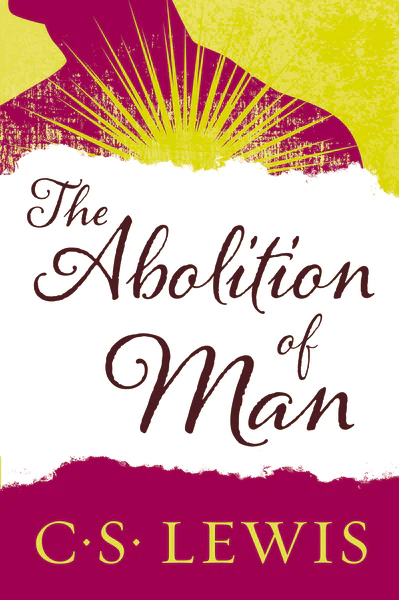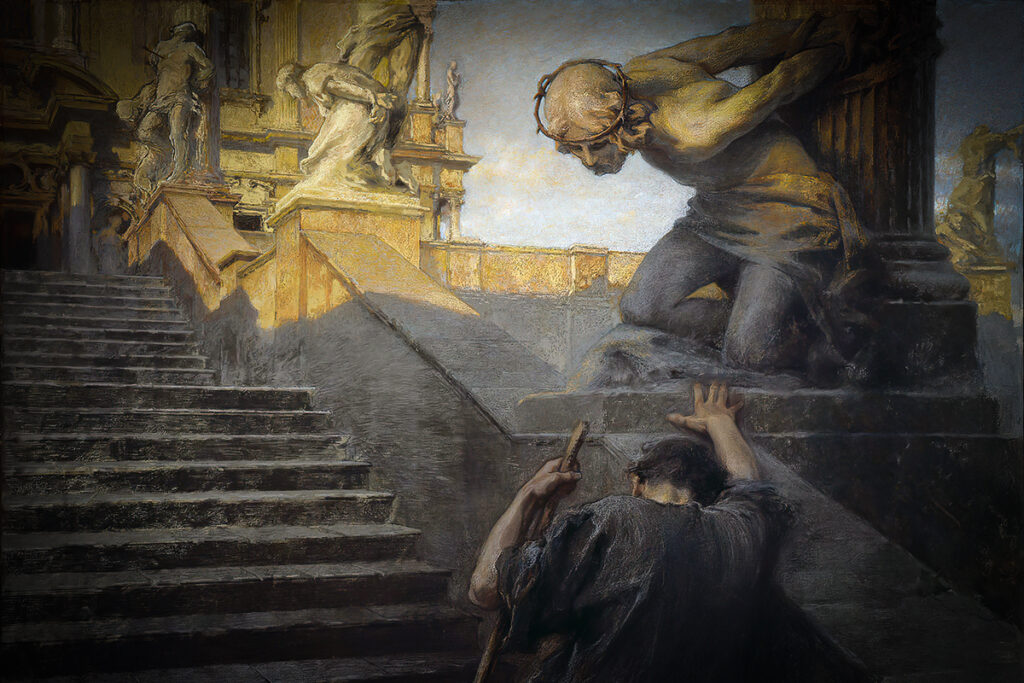C.S. Lewis’s “The Abolition of Man” is a defense of objective values against the encroachments of subjectivism and relativism. While Lewis’s arguments are informed by various sources, the classical Greek philosophies of Plato and Aristotle can be seen as offering foundational support to many of the principles Lewis defends. The following review is an interpretive understanding of the subject matter.
Introduction
This written work by C.S. Lewis is a profound philosophical and moral critique of modern subjectivism and naturalistic reductionism. It is a short book, consisting of three interconnected essays, which aim to defend the idea of objective values and natural law against modern relativistic trends.
Christian Worldview
While the book isn’t written from a Christian perspective, it refers to biblical and Judeo-Christian principles and values in various locations throughout the text. The book consists of three interconnected essays, which aim to defend the idea of objective values and natural law against modern relativistic trends.
- Men Without Chests
Lewis starts with a critique of an English textbook for students, which he feels promotes subjectivism, the idea that values and meanings are purely the product of personal feelings and have no objective basis. This subjective approach, Lewis argues, produces “men without chests” – individuals without a moral compass or appreciation for objective value and beauty. He contends that the “chest,” symbolizing the heart or moral sentiment, should be educated to resonate with universal truths and values. Such education should shape character and virtue rather than just intellect.
- The Way
In the second essay, Lewis dives deeper into the philosophy underpinning his critique. He discusses the Tao, an Eastern concept, which he uses to describe the universal moral law or Natural Law that many cultures and religions have recognized throughout history. This Tao represents objective values that are inherent to human nature. These values aren’t arbitrary but grounded in a moral order, which Christianity would recognize as being rooted in the nature of God. He suggests that all major religions and ethical systems share a core understanding of these basic principles, which provide the framework for human flourishing and moral behavior.
- The Abolition of Man
In the concluding essay, Lewis presents a vision of the future if society continues down the path of rejecting objective values. He warns that the “Conditioners,” those who reject traditional values in favor of constructing their own, will have the power to reshape humanity according to their whims. This could be through psychological conditioning or even biological manipulation. By rejecting the Tao and believing that they can define and create their own values, these individuals ironically become slaves to their own base instincts and desires. Lewis argues that this trajectory could lead to the “abolition” of genuine humanity. From a Christian perspective, this can be seen as the consequence of humanity turning away from God and the inherent design and purpose He established.
Throughout the book, Lewis, a Christian apologist, underscores the dangers of a world divorced from God-given objective moral standards. He argues for the timeless relevance of natural law, suggesting that humanity’s well-being is rooted in aligning with these eternal truths. The rejection of this moral framework doesn’t lead to greater freedom, as some might believe, but to the potential dehumanization of mankind.
In essence, “The Abolition of Man” is not just a critique of educational trends or philosophical shifts, but an urgent call for a return to understanding and valuing the objective moral order that Lewis, from a Christian worldview, believes is woven into the very fabric of the universe by its Creator.
Humanist Worldview
C.S. Lewis further provides a philosophical critique of subjectivism and the growing trend in the mid-20th century to view human values as mere social constructs or personal feelings, devoid of any objective foundation. From a humanist perspective, the book can be seen as a defense of universal values and the importance of cultivating moral sentiment in human beings, even if one might not necessarily agree with all the religious implications Lewis brings in.
- Men Without Chests
Lewis starts by examining an English school textbook, which he believes encourages students to see values and aesthetic judgments as merely subjective. He argues that this approach risks producing individuals (“men without chests”) who lack a strong moral compass and an appreciation for things of objective value. For humanists who believe in the importance of ethics and moral cultivation, this critique underscores the necessity of education that nurtures not just intellect but also character.
- The Way
Lewis delves deeper into the philosophy underpinning his arguments, introducing the concept of the Tao. While he borrows this term from Eastern philosophy, he uses it to represent what he sees as a shared, universal moral law or Natural Law recognized across various cultures and times. While humanists may not ascribe these shared values to a divine origin, many would agree with Lewis on the importance of recognizing a set of core ethical principles shared by humanity, principles that form the basis for human rights, justice, and moral reasoning.
- The Abolition of Man
In this final essay, Lewis offers a cautionary vision of the future, suggesting that if society drifts away from these shared values, it might end up in the hands of “Conditioners” who, freed from any moral constraints, could manipulate humanity according to their own desires and ideologies, potentially through psychological or even biological means. For Lewis, this could lead to the “abolition” of true humanity. From a humanist viewpoint, this is a reminder of the potential dangers of unchecked scientific and technological progress without a guiding ethical framework.
Throughout “The Abolition of Man,” Lewis’s central contention is the importance of recognizing and upholding objective values that he believes are inherent to human nature. While his defense is rooted in a Christian worldview, humanists, who emphasize the importance of ethics, reason, and shared human values, can find much to appreciate in Lewis’s critique of moral relativism. The book underscores the dangers of a world that loses touch with shared human values and the importance of moral and ethical education.
To a humanist, “The Abolition of Man” might serve as a reminder of the inherent worth of every individual, the universality of certain moral principles, and the necessity of grounding advancements, be they in education, science, or technology, in a framework that prioritizes human well-being and ethical considerations.
Philosophical Alignment
- Objective Reality and Forms (Plato)
Plato: Plato believed in the existence of the Forms (or Ideas), which are eternal, unchanging, and objective realities or ideals of which things in the material world are but imperfect copies. For instance, there’s an objective Form of Beauty, and individual beautiful things partake in this Form.
Lewis: This aligns with Lewis’s defense of objective values. When Lewis speaks of the universal moral law or Tao, he references a kind of objective standard beyond individual or cultural opinion, much like Plato’s Forms.
- Moral Virtue and Reason (Aristotle)
Aristotle: Aristotle’s ethical theory, as presented in his “Nicomachean Ethics,” is centered on the idea of virtue and the role of reason in achieving eudaimonia (often translated as “flourishing” or “well-being”). For Aristotle, virtues are objective qualities of character that individuals should cultivate to live by reason and achieve the good life.
Lewis: Lewis’s critique of “men without chests” can be seen in light of Aristotle’s emphasis on virtue. Lewis laments an education system that fails to cultivate the “chest” or moral sentiment, leaving individuals with raw emotion (the belly) and cold reason (the head) but no guiding moral sentiment (the chest). This aligns with Aristotle’s emphasis on moral virtues as guiding principles.
- Moral Universals (Both Plato and Aristotle)
Plato and Aristotle: While they had different approaches to ethics, both Plato and Aristotle believed there are objective truths about morality. For Plato, these were grounded in the Forms, while for Aristotle, they were derived from understanding human nature and purpose.
Lewis: His concept of the Tao aligns with this idea of moral universals. For Lewis, the Tao represents the universal moral truths acknowledged by various cultures across history, which he sees as evidence of their objective reality.
- Rational Souls and the Hierarchical Nature of Reality
Plato and Aristotle believed in the soul’s rational aspect, distinguishing humans from other creatures. They also viewed the universe as having a hierarchical structure, with different levels of beings possessing different levels of reality or actuality.
Lewis: This aligns with Lewis’s view of human nature and his concerns about “conditioners” reshaping it. For Lewis, attempts to redefine or “condition” human nature without referencing its true, objective essence (as understood through the Tao or traditional morality) are doomed to fail and lead to dehumanization.
In summary, while C.S. Lewis doesn’t exclusively rely on Platonic or Aristotelian thought in “The Abolition of Man,” the principles of objective moral values, the cultivation of virtue, and the rational nature of humanity advocated by these ancient philosophers offer strong support to Lewis’s arguments against modern subjectivism and in favor of universal moral standards.
CHAPTER 1
Men Without Chests
“Men Without Chests” is the opening chapter of C.S. Lewis’s philosophical book, “The Abolition of Man.” “Men Without Chests” begins with Lewis critically examining an English textbook for students, which he pseudonymously names “The Green Book” and its authors as “Gaius and Titius.” This textbook, he says, embodies and promotes a certain kind of subjective relativism, which he believes is dangerous. Lewis uses the book as a starting point to delve into deeper philosophical issues.
One particular excerpt from “The Green Book” that draws Lewis’s attention involves a story about a tourist who calls a waterfall “sublime.” The authors correct the tourist, stating that he isn’t actually commenting on the waterfall itself but rather on his own feelings about it. They argue that he’s merely saying he has “sublime feelings.” Lewis takes issue with this interpretation. He believes it represents a broader educational trend, which teaches students to dismiss objective value in favor of mere subjective feelings. By doing so, Lewis argues, we create “men without chests” – that is, individuals who lack the heart, the moral compass, to discern objective value and beauty in the world.
For Lewis, the “chest” represents the seat of sentiments or moral feelings that should be cultivated and educated to align with objective virtues. It serves as a mediator between rational thought (the head) and basic, instinctual desires (the stomach). If the chest, or moral sentiment, is removed from the equation, then it’s just pure reason trying to control base desires, and this, Lewis claims, is bound to fail. We are left with either sheer egoistic pursuit or cold, detached reasoning, both of which neglect true humanity.
Lewis further criticizes modern educators for producing analytical and skeptical minds at the cost of cultivating virtue. He argues that such an education doesn’t liberate the student but instead enslaves them, for they are left without the guiding star of moral objective values. He touches upon the role of tradition, claiming that the time-tested values and sentiments that were passed down through generations were not arbitrary but grounded in something real. Modernity’s rejection of these sentiments, Lewis warns, could lead to the abolition of genuine humanity, setting the stage for the arguments he’ll develop in the subsequent chapters.
In essence, “Men Without Chests” is a critique of modern relativism and a defense of objective values. Lewis argues that we are stripping humanity of its ability to recognize and appreciate objective beauty, virtue, and morality by relegating them to mere subjective feelings. This, he believes, is a deeply dehumanizing trend.
CHAPTER 2
The Way
This chapter delves deeper into the philosophical underpinnings of his argument against moral subjectivism and his defense of objective values. Here is a summary of this chapter:
- The Concept of the Tao
Lewis introduces the idea of the Tao, a term borrowed from Chinese philosophy, to represent the overarching moral and philosophical tradition that spans across various cultures and times. In this context, the Tao is akin to what many might call Natural Law or Universal Morality. It’s the collection of moral principles recognized as true and valid across diverse civilizations, regardless of their cultural, historical, or geographical differences.
- The Universality of Moral Principles
Lewis argues that when we look across different cultures and civilizations, from ancient to contemporary, from East to West, we find a remarkable agreement on core moral principles. Whether it’s the ancient Egyptians, Babylonians, Hindus, Greeks, or Chinese, certain values like courage, justice, and honor are universally esteemed, while treachery, cowardice, and injustice are universally condemned.
- Implications of Rejecting the Tao
If one tries to establish a system of values outside of the Tao, Lewis argues, it becomes either arbitrary or self-contradictory. One cannot justify any value or moral stance without implicitly appealing to some aspect of the Tao. For instance, any argument for a “new” morality based on the welfare of the majority ultimately relies on the pre-existing Tao principle that human welfare is good. This means that every attempt to define a morality apart from the Tao either collapses into incoherence or merely modifies the Tao, rather than replacing it.
- The Limitations of Instinct
Lewis counters the argument that our moral behaviors are merely a product of instinct. While humans have various instincts (like the instinct to protect one’s young or the instinct to compete), these instincts in themselves do not tell us what we ought to do. Often, instincts conflict, and choosing between them requires some higher moral framework. This framework, which helps us judge between competing instincts, is what Lewis identifies with the Tao.
- The Danger of Modern Innovations
The “innovators” of morality, those who advocate for moralities outside of the Tao, often do so believing that they’re advancing human welfare. However, Lewis warns that their innovations can often lead to disastrous consequences because they are unmoored by the tried-and-true moral realities in the Tao. Detached from this foundational moral code, they might justify all sorts of actions that, in the long run, could be detrimental to humanity.
Lewis concludes “The Way” by reemphasizing the importance of the Tao as the only solid foundation for morality. Without this grounding, any attempt at moral philosophy becomes untethered and risks leading society astray. For Lewis, the Tao isn’t just a relic of the past but is essential for humanity’s moral and philosophical health. Moreover, Lewis presents a powerful defense of traditional morality, asserting that objective moral values exist and are recognized universally across different cultures and times. In doing so, he challenges modern trends that dismiss or seek to replace these foundational principles.
CHAPTER 3
The Abolition of Man
In the third and final essay of his book, C.S. Lewis extrapolates from the philosophical and educational trends he critically traverses in the earlier essays to present a cautionary vision of the future.
- Conditioning the Conditioners
Lewis begins by contemplating a future where those in power, whom he terms “Conditioners,” utilize science and technology to modify humanity’s basic nature, thus effectively controlling and reshaping the fabric of human thought and feeling. This future, for Lewis, becomes possible once the objective values and traditional morality (represented by the Tao in the previous essay) are rejected.
- Moral Relativity and Power
When objective values are discarded, the Conditioners don’t have any external moral compass to guide their actions. Instead, they operate based on their own whims, desires, or what they believe is best for humanity. But, as Lewis argues, without an objective standard, notions of what’s “best” are rendered meaningless. Hence, the Conditioners’ actions become solely about power and control.
- Man’s Conquest of Nature
One of Lewis’s key arguments is that, in seeking to conquer nature, man ultimately conquers himself. With advancements in science and technology, especially those that allow for the manipulation of human biology and psychology, humanity attempts to gain power over its own nature. However, this “power” is always held by some humans over others. It’s not humanity mastering nature in general, but rather some people mastering their fellow humans.
- Loss of True Humanity
With the rise of the Conditioners and their unchecked power, humanity risks losing its essence. The modifications made by the Conditioners, whether biological, psychological, or societal, could strip away the very qualities that make humans unique, leading to the “abolition” of man in a metaphysical sense. Humanity might continue, but it would be a version shaped and defined by the Conditioners, detached from the traditional moral and philosophical heritage (the Tao) that, according to Lewis, has underpinned human civilizations for millennia.
- The End of Progress
Lewis sets fire to the notion of “progress” as understood by the innovators and Conditioners. True progress, for him, would be moving closer to a deeper understanding and embodiment of the Tao—the universal moral law. By contrast, what the Conditioners see as progress is mere change, chaotic or dangerous change at that. By detaching from the Tao, they lead humanity into an abyss of relativism and certain destruction from impulses of the moment that result in accumulated evil and corrupted power. To more fully grasp Lewis’s point about the outcome of Conditioners’ detachment from Tao, he articulates the dire and inevitable specifics about the destruction sought along the way. More specifically, as Conditioners who self-detach from Tao pursue “progress” (which is really just arbitrary change by visceral impulses), they seek the use of magic (that does not work)and applied science to subdue reality to the wishes of men – efforts of the Conditioners accordingly described by the fitting metaphor of Man in futility digging up and mutilating the dead.
Summary
In “The Abolition of Man,” Lewis pronounces a warning that spans decades concerning the consequences of abandoning belief in objective values, and the dangers of technological and scientific power sought for the purpose of subduing natural law and reality. He argues that true human dignity, freedom, and virtue lie in alignment with the Tao—the traditional moral law—and that deviations from it, especially those driven by a desire for power and control, threaten the very essence and existence of humanity.
Throughout this essay, Lewis combines philosophical rigor with a deep concern for the trajectory of human civilization, presenting a compelling case for the timeless relevance of objective morality and the utmost necessity for humanity to reject people of influence or in positions of power who actively seek to reshape people and what they believe to serve their own impulses and evil desires.

















